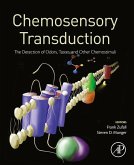Seminar paper from the year 2005 in the subject Biology - Evolution, grade: A, Umea University (Department of Ecology and Environmental Sciences), course: Course: Evolutionary Ecology, language: English, abstract: Introduction How and why did life originate and evolve on earth? These might be two of the earliest questions which arose with the development of a brain that was capable of abstract thinking more than 300 000 years ago. People have used myths and religious beliefs to find answers to these questions, but without success in terms of a widely accepted and evidence-based theory about the origin and evolution of life. Scientists have not started to address these fundamental questions until much more than 100 years ago and are far from being able to explain why these processes happened and are still going on, but considerable progress has undoubtedly been made in understanding how what we call life developed. But what do we call life? Even if the origin of complex organic substances from methane, ammonium, water and hydrogen in the early earth atmosphere did not lead to the origin of living organisms directly, these events unquestionably represented milestones along this path since from these substances, of which amino acids were a very great part, the formation of nucleotides and ribonucleic acid was only one small step ahead. Since ribonucleic acid is able to carry information and to replicate, two decisive features of what we call life were at this point fulfilled. However, the ability to develop on both ontogenetic and phylogenetic levels represent one more precondition for a cluster of molecules to be considered as life. This characteristic is inseparably linked with the existence of a metabolism because one needs to incorporate energy from the environment and to bring it into a form that can be used by the organism in order to build up anything new. Before an effective metabolism could develop, the replicating machinery, which used DNA instead of RNA by that time, was surrounded by a membrane separating it from the environment; creating the possibility to harvest energy in form of a molecule whose catabolism could be coupled with energy-consuming anabolic reactions. This molecule, ATP, has kept this function ever since its first occurrence. The existence of the first prokaryotic organisms with such a kind of basic metabolism has been proven and dated back about 3,5 billion years. 2; 7 Evolution has been going on ever since: Driven by the evolutionary forces of mutation, recombination, migration, genetic drift and selection, more and more complex organisms which were adapted better and better to their respective environments developed...
Dieser Download kann aus rechtlichen Gründen nur mit Rechnungsadresse in A, B, BG, CY, CZ, D, DK, EW, E, FIN, F, GR, HR, H, IRL, I, LT, L, LR, M, NL, PL, P, R, S, SLO, SK ausgeliefert werden.









